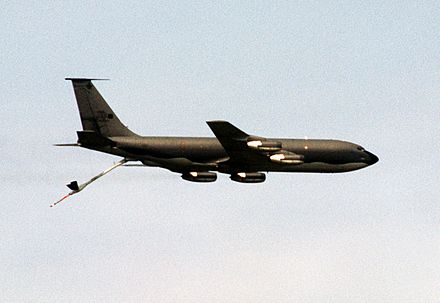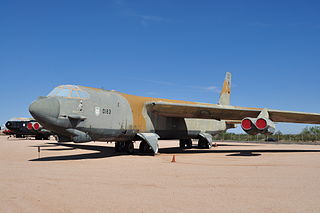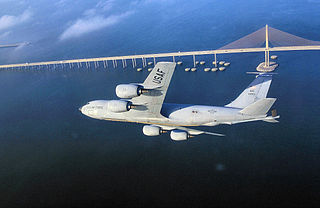| 2d Bomb Wing | |
|---|---|
 Boeing B-52H bomber at Barksdale Air Force Base | |
| Active | 15 October 1947 – present |
| Country | |
| Branch | |
| Role | Bomber |
| Part of | Air Force Global Strike Command Eighth Air Force |
| Garrison/HQ | Barksdale Air Force Base |
| Motto(s) | LIBERTATEM DEFENDIMUS Latin: We Defend Liberty |
| Aircraft | B-52 Stratofortress |
| Decorations | see "Lineage and Honors" section below |
| Commanders | |
| Current commander | Colonel Michael A. Miller |
| Notable commanders | George J. Eade Eugene E. Habiger Charles T. Robertson, Jr. John Dale Ryan |
| Insignia | |
| 2d Bomb Wing emblem (approved 10 August 1951) [1] | 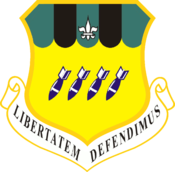 |
The 2d Bomb Wing is a United States Air Force unit assigned to the Air Force Global Strike Command and Eighth Air Force. It is stationed at Barksdale Air Force Base, Louisiana. The wing is also the host unit at Barksdale. The wing was assigned to the Air Force Global Strike Command in February 2010 as part of the reassignment of Eighth Air Force.

The United States Air Force (USAF) is the aerial and space warfare service branch of the United States Armed Forces. It is one of the five branches of the United States Armed Forces, and one of the seven American uniformed services. Initially formed as a part of the United States Army on 1 August 1907, the USAF was established as a separate branch of the U.S. Armed Forces on 18 September 1947 with the passing of the National Security Act of 1947. It is the youngest branch of the U.S. Armed Forces, and the fourth in order of precedence. The USAF is the largest and most technologically advanced air force in the world. The Air Force articulates its core missions as air and space superiority, global integrated intelligence, surveillance, and reconnaissance, rapid global mobility, global strike, and command and control.

Air Force Global Strike Command (AFGSC) is a Major Command (MAJCOM) of the United States Air Force, headquartered at Barksdale Air Force Base, Louisiana. AFGSC provides combat-ready forces to conduct strategic nuclear deterrence and global strike operations in support of combatant commanders. It is subordinated to the USSTRATCOM.

The Eighth Air Force is a numbered air force (NAF) of the United States Air Force's Air Force Global Strike Command (AFGSC). It is headquartered at Barksdale Air Force Base, Louisiana. The command serves as Air Forces Strategic – Global Strike, one of the air components of United States Strategic Command (USSTRATCOM). The Eighth Air Force includes the heart of America's heavy bomber force: the B-2 Spirit stealth bomber, the B-1 Lancer supersonic bomber, and the B-52 Stratofortress heavy bomber aircraft.
Contents
- Units
- History
- Medium bomber era
- B-52 Stratofortress
- Lineage
- Assignments
- Components
- Stations
- Aircraft
- Awards and campaigns
- Emblem
- See also
- References
- Notes
- Bibliography
- External links
The 2 BW is one of only two B-52H Stratofortress wings in the United States Air Force, the other being the 5th Bomb Wing at Minot Air Force Base, North Dakota.

The 5th Bomb Wing is a United States Air Force unit assigned to Air Force Global Strike Command's Eighth Air Force. It is stationed at Minot Air Force Base, North Dakota. The wing is also the host unit at Minot. The 5 BW is one of only two Boeing B-52H Stratofortress wings in the United States Air Force, the other being the 2d Bomb Wing at Barksdale Air Force Base, Louisiana.
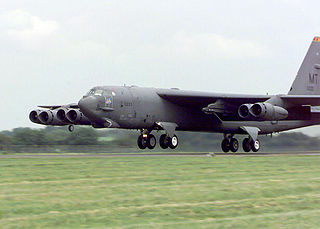
Minot Air Force Base is a U.S. Air Force installation in Ward County, North Dakota, 13 miles (20 km) north of the city of Minot via U.S. 83. In the 2010 census, the base was counted as a CDP with a total population of 5,521, down from 7,599 in 2000. Minot AFB is the home of two major wings: the 5th Bomb Wing and 91st Missile Wing, both of the Global Strike Command (AFGSC).
Its 2d Operations Group is the oldest bomb group of the Air Force, having fought on the Western Front as the 1st Day Bombardment Group during World War I, entering combat on 12 September 1918. [2] After the war, it participated in Brigadier General Billy Mitchell's 1921 off-shore bombing test. Active for over 60 years, the 2 BW was a component wing of Strategic Air Command (SAC)'s heavy bomber deterrent force throughout the Cold War.

The 2d Operations Group is the flying component of the United States Air Force 2d Bomb Wing, assigned to the Air Force Global Strike Command Eighth Air Force. The group is stationed at Barksdale Air Force Base, Louisiana.

The Western Front was the main theatre of war during the First World War. Following the outbreak of war in August 1914, the German Army opened the Western Front by invading Luxembourg and Belgium, then gaining military control of important industrial regions in France. The tide of the advance was dramatically turned with the Battle of the Marne. Following the Race to the Sea, both sides dug in along a meandering line of fortified trenches, stretching from the North Sea to the Swiss frontier with France, which changed little except during early 1917 and in 1918.

World War I, also known as the First World War or the Great War, was a global war originating in Europe that lasted from 28 July 1914 to 11 November 1918. Contemporaneously described as "the war to end all wars", it led to the mobilisation of more than 70 million military personnel, including 60 million Europeans, making it one of the largest wars in history. It is also one of the deadliest conflicts in history, with an estimated nine million combatants and seven million civilian deaths as a direct result of the war, while resulting genocides and the 1918 influenza pandemic caused another 50 to 100 million deaths worldwide.
The 2d Bomb Wing is commanded by Colonel Michael A. Miller. The Command Chief Master Sergeant is Joshua W. Swanger. [3]




